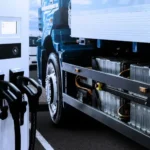In the transformative era of sustainable transportation, Electric Vehicle (EV) Charging Infrastructure emerges as the backbone, facilitating the widespread adoption of electric vehicles and paving the way for a greener and more sustainable future. This comprehensive exploration delves into the critical role of EV Charging Infrastructure, unraveling its core components, types, challenges, and the transformative impact it has on shaping the landscape of electric mobility.
The Significance of EV Charging Infrastructure:
EV Charging Infrastructure is a pivotal enabler in the transition to electric mobility, providing the necessary support for electric vehicles to thrive. Its significance lies in creating a network of charging stations that ensures the accessibility, convenience, and viability of electric vehicles for a broader consumer base. By strategically deploying charging points, EV Charging Infrastructure addresses the range anxiety associated with electric vehicles, promotes sustainable transportation, and contributes to reducing greenhouse gas emissions, aligning with global efforts to combat climate change.
At its core, EV Charging Infrastructure comprises several essential components that provide a seamless charging experience. These components include charging stations, connectors, power supply equipment, communication systems, and software platforms. Charging stations with different power levels serve as the physical interface for vehicle charging. Connectors ensure compatibility between the charging station and the electric vehicle. Power supply equipment manages the electrical flow, while communication systems and software platforms enable remote monitoring, payment processing, and data analytics for efficient infrastructure management.
EV Charging Infrastructure encompasses various charging stations catering to different charging needs and time constraints. These types include Level 1 (AC charging at a standard household outlet), Level 2 (AC charging with higher power output, suitable for residential and commercial settings), and Level 3 or DC Fast Charging (high-powered, rapid charging stations primarily deployed along highways and in public spaces). Each type caters to different scenarios, offering flexibility and adaptability to diverse user requirements.
Challenges in EV Charging Infrastructure
While the significance of EV Charging Infrastructure is undeniable, its widespread adoption is not without challenges, necessitating innovative solutions for seamless integration.
Range Anxiety and Charging Access Disparities
Range anxiety, the fear of an electric vehicle running out of charge before reaching a charging station, remains a significant challenge. Additionally, disparities in charging access, particularly in rural or underserved areas, hinder the equitable adoption of electric vehicles. Addressing these challenges requires strategic deployment of charging stations along highways, urban centers, and areas with limited charging infrastructure.
Charging Standardization and Interoperability
The absence of universal standards for charging connectors and protocols poses an interoperability challenge. Standardization efforts are crucial to ensuring that electric vehicles can seamlessly charge across different charging networks, promoting a user-friendly experience, and encouraging electric vehicle market growth.
Grid Capacity and Energy Demand
As the number of electric vehicles on the road increases, the demand on the electrical grid escalates. Balancing grid capacity, managing peak demand, and integrating renewable energy sources into the grid become critical considerations. Innovations in smart grid technologies and demand-side management are essential to optimize energy distribution and address the increased load on the grid.
Future Trends in EV Charging Infrastructure
The future of EV Charging Infrastructure is shaped by transformative trends to enhance accessibility, sustainability, and user experience.
Ultra-Fast Charging and Battery Technology Advancements
The development of ultra-fast charging technologies, coupled with advancements in battery technology, is a notable trend. Ultra-fast charging stations promise significantly reduced charging times, enhancing the practicality and appeal of electric vehicles. Concurrent advancements in battery technology increase energy density, extending the range of electric vehicles and contributing to a more sustainable transportation ecosystem.
Integration of Smart Technologies and IoT
Smart technologies and the Internet of Things (IoT) are revolutionizing EV Charging Infrastructure. Smart charging stations equipped with real-time data analytics, predictive maintenance, and user-friendly mobile applications enhance the efficiency and reliability of charging networks. This trend contributes to electric vehicle users’ seamless and interconnected charging experience.
Expansion of Public-Private Partnerships
The expansion of public-private partnerships is a growing trend in developing and deploying EV Charging Infrastructure. Collaborations between government entities, private companies, and utility providers facilitate the widespread distribution of charging stations, address funding challenges, and contribute to creating a comprehensive and accessible charging network.
Conclusion
EV Charging Infrastructure stands as a linchpin for the success and sustainability of electric mobility. As the world transitions towards greener transportation solutions, comprehensive charging networks’ strategic development and integration become imperative. Despite challenges, the transformative trends and innovations in EV Charging Infrastructure promise a future where electric vehicles are a viable alternative and a mainstream choice for consumers.
By addressing range anxiety, promoting standardization, and embracing technological advancements, the trajectory of EV Charging Infrastructure aligns with the broader goal of creating a cleaner and more sustainable transportation ecosystem. As the electric vehicle revolution accelerates, the role of EV Charging Infrastructure becomes increasingly central to shaping a future where sustainable mobility is not just a vision but a tangible reality.










